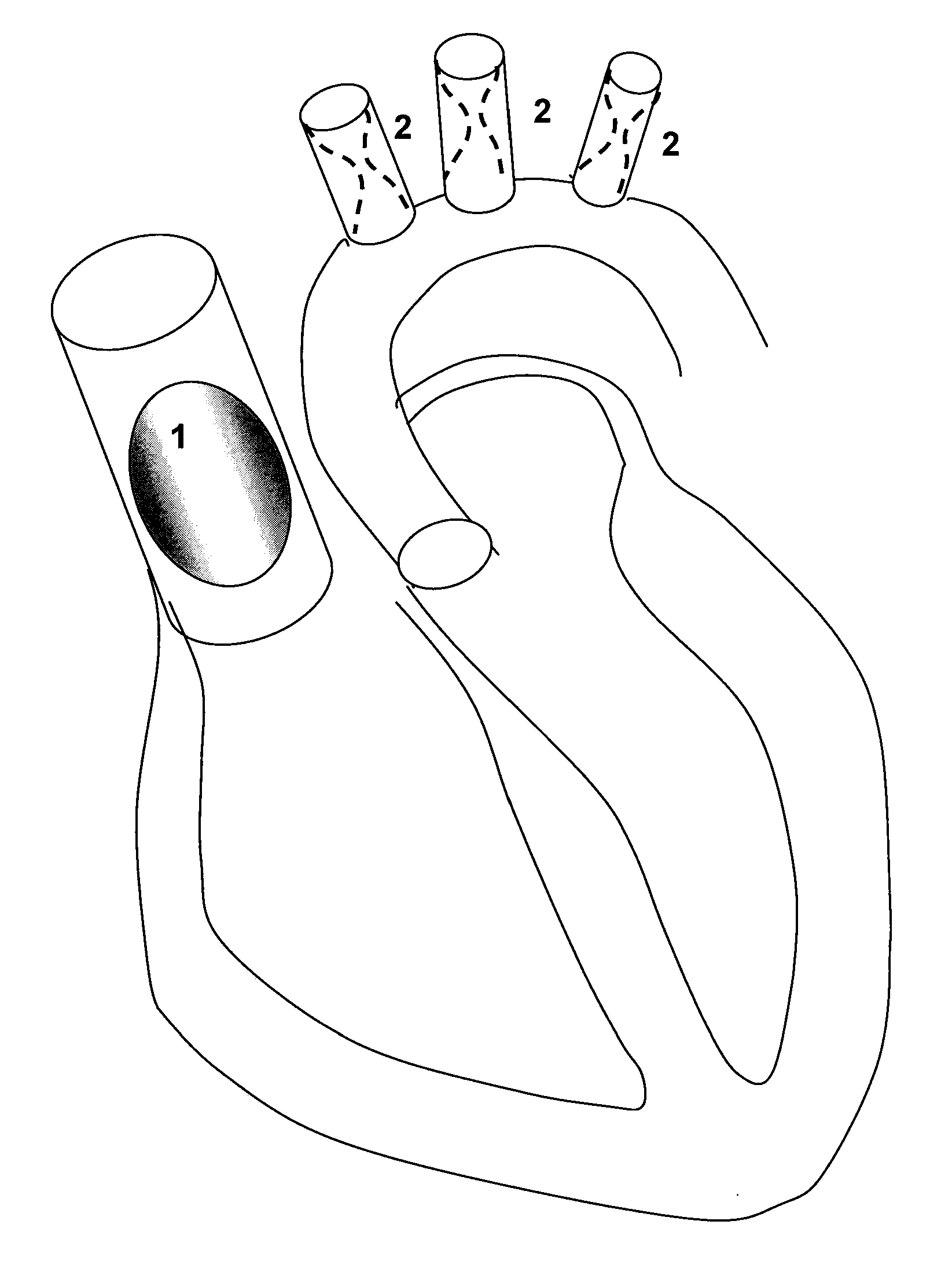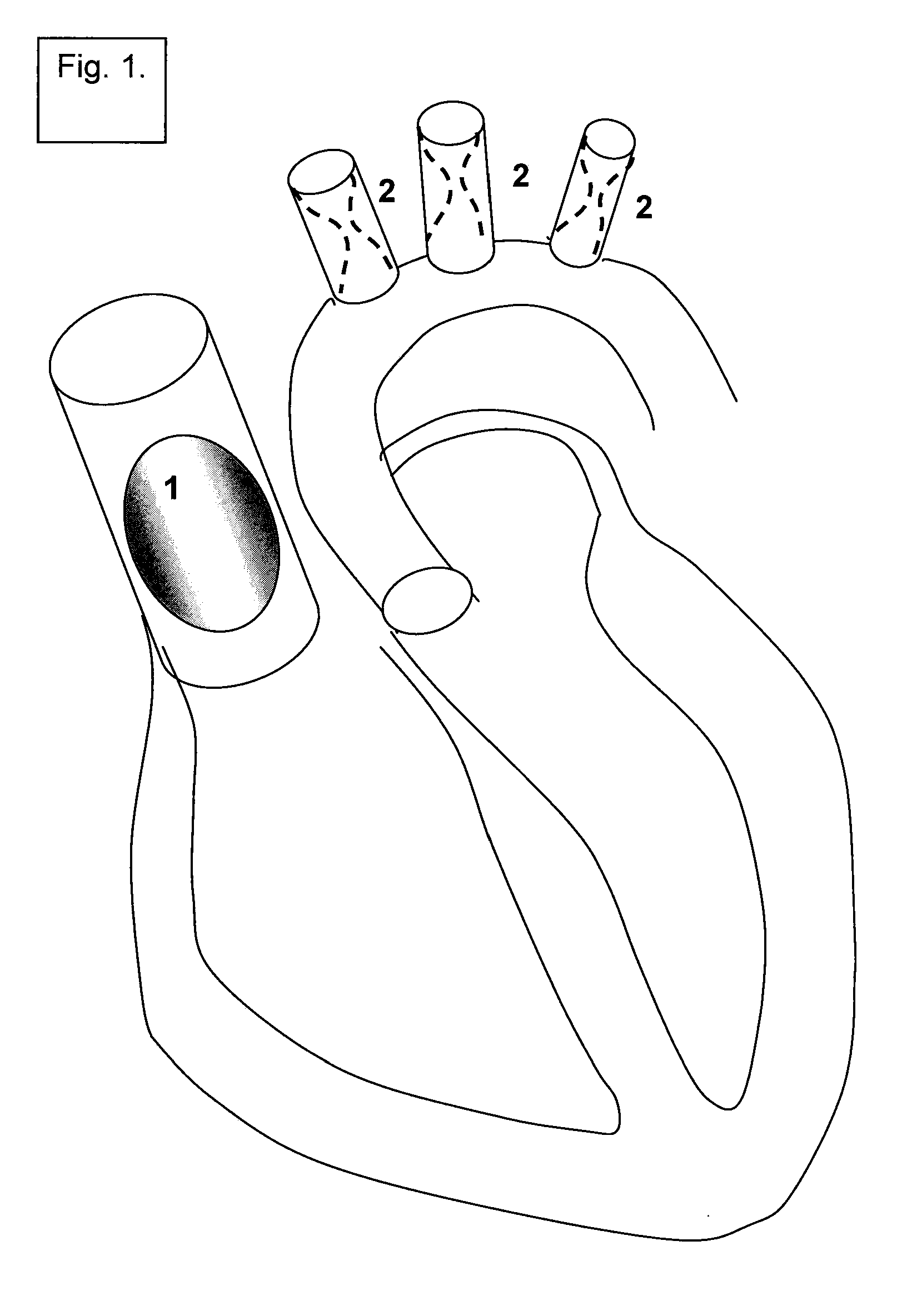Novel approaches to venous occlusion for embolus management
a technology of embolus and venous occlusion, which is applied in the direction of prosthesis, catheter, blood vessel, etc., can solve the problems of brain cell death, minimally invasive techniques have only heightened ongoing awareness of these issues, and the generation of downstream embolus is a major drawback, so as to reduce the flow of blood into the body and raise the blood pressure
- Summary
- Abstract
- Description
- Claims
- Application Information
AI Technical Summary
Benefits of technology
Problems solved by technology
Method used
Image
Examples
Embodiment Construction
[0103]Referring to FIG. 1, percutaneous internal jugular vein catheterization is used to introduce an inflatable balloon that is capable of occluding this vein. The balloon is deliberately and intermittently inflated before manipulations of the aorta, in particular, before manipulations expected to generate emboli, such as particles of atherosclerotic plaque. These manipulations include removal of an aortic cross clamp and partial occlusion clamp. By way of the balloon, the jugular venous pressure is increased transiently, resulting in a venoarterial reflex that constricts blood flow from the aorta to the brain. Alternatively, or in addition, an inflatable balloon can be implanted in and used in a brachiocephalic vein or in the superior vena cava. Where balloons are used in more than one vein, the occlusions can be timed to be simultaneous, or they can be staggered in time.
[0104]FIG. 2 shows a stent that bridges an abdominal aortic aneurysm. A balloon can be inserted in the renal ve...
PUM
 Login to View More
Login to View More Abstract
Description
Claims
Application Information
 Login to View More
Login to View More - R&D
- Intellectual Property
- Life Sciences
- Materials
- Tech Scout
- Unparalleled Data Quality
- Higher Quality Content
- 60% Fewer Hallucinations
Browse by: Latest US Patents, China's latest patents, Technical Efficacy Thesaurus, Application Domain, Technology Topic, Popular Technical Reports.
© 2025 PatSnap. All rights reserved.Legal|Privacy policy|Modern Slavery Act Transparency Statement|Sitemap|About US| Contact US: help@patsnap.com



